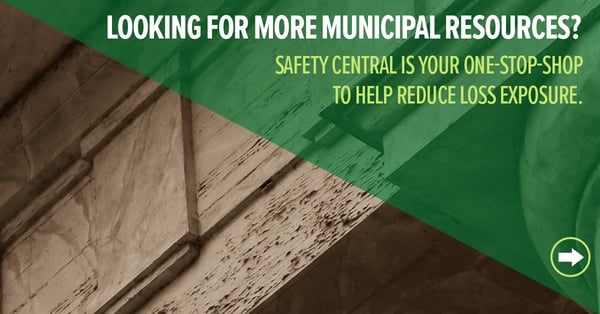When was the last time you revamped your Driver Safety Program?
We all think we’re great drivers, don’t we? In a joint document by NETS, NHTSA and OSHA some shocking statistics prove otherwise:
- Every 12 minutes someone dies in a motor vehicle crash
- Every 10 seconds a motor vehicle crash-related injury occurs
- Every 5 seconds a motor vehicle crash occurs
Unfortunately, car crashes are the leading cause of death and injury for all ages, and as employers, the cost of employee accidents can be substantial. You may think you’re immune to the risks of texting and driving, hitting the road while tired or messing with the radio behind the wheel — but you’re not. Accidents happen.
What can you do as an employer? Promote safe driving through a Driver Safety Program and make sure your team is up-to-date on your organization’s policies and procedures. Check out some of our resources to help construct or revamp a program and navigate those bumps on the road.
Driver Selection
For many municipal operations, company vehicles are extremely important on a daily basis. Because they also pose as liability threats, minimize the chance of accidents and injuries from the start by implementing a comprehensive employee screening.
Determining Preventability
Anyone behind the wheel should know the difference between accidents that are preventable and non-preventable. In the below bulletin, we discuss different types of accidents as well as various scenarios that show whether or not the incident was avoidable.
Backing Procedures
Many municipal vehicles face the issue of blind spots, which can make backing up difficult and result in accidents and injuries. To reduce this risk, a standard operating and training guideline should be implemented concerning driver and spotter responsibilities.
Driver Monitoring Systems
Your team is likely well qualified and may also be knowledgeable of the policies and procedures in your Driver Safety Program. Even so, how do you ensure that they’re putting these best practices to good use? Consider monitoring systems. Enforcing these systems can help you identify hazardous behavior and maximize your effort to limit distractions and improve driver behavior.
Accident Reporting Packet
If an accident were to occur, would your team have the right tools on-hand? An accident reporting document should stay in vehicles at all times and employees should be well-aware of reporting procedures. This includes obtaining information from the police and witnesses, a description of the accident and photos of any damage.
Each year, vehicle accidents cost employers $60 billion in medical care, legal expenses, property damage and lost productivity. Sharing these resources and implementing a Driver Safety Program can help reduce this number, improve your bottom line and most importantly — save a life.

Richie Almeida, Integrated Marketing Specialist
Richie is an avid movie goer with an addiction to Sour Patch Kids. If he isn’t at the movies, he is at the gym or on a hike trying to make up for his bad eating habits.
DISCLAIMER
The information contained in this blog post is intended for educational purposes only and is not intended to replace expert advice in connection with the topics presented. Glatfelter specifically disclaims any liability for any act or omission by any person or entity in connection with the preparation, use or implementation of plans, principles, concepts or information contained in this publication.
Glatfelter does not make any representation or warranty, expressed or implied, with respect to the results obtained by the use, adherence or implementation of the material contained in this publication. The implementation of the plans, principles, concepts or materials contained in this publication is not a guarantee that you will achieve a certain desired result. It is strongly recommended that you consult with a professional advisor, architect or other expert prior to the implementation of plans, principles, concepts or materials contained in this publication.
This blog post may contain the content of third parties and links to third party websites. Third party content and websites are owned and operated by an independent party over which Glatfelter has no control. Glatfelter makes no representation, warranty, or guarantee as to the accuracy, completeness, timeliness or reliability of any third party content. References to third party services, processes, products, or other information does not constitute or imply any endorsement, sponsorship or recommendation by Glatfelter, unless expressly stated otherwise.
Related posts
While trees can bring beauty and benefits to your community, property damage or injuries could occur if you overlook their risks.
Keep these tips in mind to help your water facility minimize the damage and disruption a hurricane could cause.
How you can help protect your most important asset: your people, and how to help them set up their insurance benefits so that they reflect their wishes.













Submit a Comment